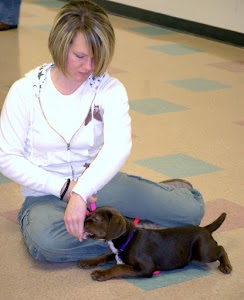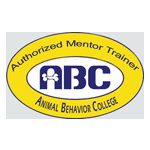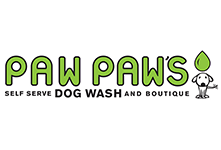One of the number one mistakes we see clients create is a lack of awareness of their dog’s wants, needs, desires and communcation. A great dog trainer is proactive and collaborative. As a result, the owner is paying attention to his dog’s environment and his dog’s behavior. The owner’s actions are altruistic and are dependent on what is occurring around his dog and inside of his dog. As a result, he is able to create effective obedience in dog training. Salt Lake City is a the home of many dogs owners and the majority of owners are unaware of this concept.
What exactly do we mean by being proactive?
1.) You are training your dog in the easiy environments. Certainly, there are many training techniques that suggest putting your dog immediately in the stressful situation and then correcting them when they perform the wrong behavior. This will work but in the long run your dog will feel much more stress. As a professional dog trainer with Four Legged Scholars, Dog Training, Salt Lake City, we recommend keeping your dog below threshold. This means that they are relaxed emotionally or almost relaxed while they are learning something new. Where you perform dog training and the number of distractions present are totally in your control. By keeping distractions low and choosing a low stressful environment, you will create your dog to perform obedience commands faster.
2.) You are listening to what your dog is communicating to you. If your dog is stressed, it is important for you to be aware of these stress signs. Again our Salt Lake City dog training company recommends keeping your dog’s stress level low during dog training sessions. In order to do this you need to be aware of your dog’s body posture and body language. When a dog is relaxed there are curves in his body rather than stiffness. Also, if your dog is performing many calming signals, then your dog is probably too stressed to learn. A few calming signals can be good depending on the scenario, however, it is definitely a red flag if your dog is demonstrating multiple calming signals consecutively.
3.) You are asking your dog to perform commands when your dog is relaxed or minorly stressed rather than when he is highly stressed. We have seen many dog owners be less than proactive in their dog training. Salt Lake City is where we hold our outdoor leash walking course. In this course clients learn how to request commands when their dogs are below threshold. For example, if a dog whines and pulls on the leash around bikers, it is much harder for the dog to perform a stay command when he is 5 feet away from the biker than when he is 20 or even 50 away. As a result, if a biker is coming toward a dog and an owner on a trail, the owner will be more successful with a stay command if he asks his dog to move 20 feet off of the trail and asks his dog to stay while the biker is still far away. This takes much awareness and commitment with dog training. Salt Lake City, has plenty of environments where owners can practice this concept.
4.) Above all being proactive means that you are setting up everything in your dog training session to be as successful as possible. You are highly aware! Some other quick examples would the following:
- If your dog is extremely hyper, it might be better to do some off-leash work before doing on-leash work.
- Your dog maybe in pain if he isn’t moving or performing commands easily. Therefore, it might be best to have him checked by a veterinarian before doing more dog training.
- If your dog just ate dinner, he might not be as hungry to eat treats. As a result, he maybe less motivated to perform dog training with food rewards. Instead, you could use toy rewards. In the future, you could also choose to train your dog before he eats his meal.
Salt Lake City has many professional dog training choices. We highly recommend you find a positive reinforcement trainer and choose a trainer that is the best match for you. If you are struggling with your dog, it is always best to seek support!
Your Turn! We want to hear from you! Please post a comment below!
How have you been slacking in your proactivity with your dog training? What can you change to create more successful obedience with your dog?
Namaste!
Johanna Teresi, Professional Trainer and Owner of Four Legged Scholars LLC, Dog Training, Salt Lake City





















Don’t forget, be proactive about reinforcing your dog when they are NOT doing an undesirable behavior. Sure, there are training techniques you can do to interrupt your dog from barking, but every time your dog doesn’t bark at something that would normally be a trigger is a great chance to reinforce being quiet. My neighbor’s dogs love to bark at the cat in our back yard, but when they actually just sit there quietly and watch the cat is when I go over and pet them. Of course, it would take more proactive work on the neighbor’s part to really prevent the barking, but that’s a good example of not ignoring the good behavior your dog does.
Susan! I couldn’t agree more! Yes definitely rewarding our dogs for doing what they want is so important. Traditional training as you know waits for the dogs to fail and then the owner corrects them. This is one way to train and it works. However, it is not the way we train. We look at what we want more of and then reward that!! I love how you are supporting your neighbors in creating more quiet dogs. You could even take it a step further if you wanted by having a conversation with your neighbor. Bring them some goodies and introduce yourself as their new neighbor. Then ask them if they are willing to partake in training. If no, you could ask them if they are willing to allow you to do training for them. When your cat is outside you can have a clicker and treats on you and reward when their dogs are quiet! I am looking forward to seeing you comment on future posts. You have so much to offer the dog community! Enjoy your trip and namaste!
This is something I am working on with our puppy. I know that sometimes she’s barking or jumping because she wants my attention so if I pay attention to her when she’s not doing these behaviors, it will feed her need without doing the undesirable behaviors!
Megan, This is awesome! There are many ways your dog can get attention for not jumping. Here are a few options: petting, eye contact, clicking & treating, giving your dog a play toy, throwing his meal or tons of treats all of the ground, and giving your dog a food oriented toy to chew on. The last 3 items will reward your dog not only for NOT jumping on but also will occupy him for a certain length of time 🙂 These items could include: a frozen kong with peanut butter, bully stick , or raw femur bone (you can get one at Snider’s meat market). Also keep in mind that you can always use management. Also if need to focus on a task or you just need some “space” yourself you can always do one of the following: put Spottie in his crate, put Spottie in a doggie proofed room with the door closed or gated (a baby gate works well for most dogs, enclose Spottie in an ex-pen, or tether Spottie to his bed for a short time period with a food oriented toy on an arm length tether with you closeby to supervise him. I hope those ideas stretch you farther to create dog training success faster. Great job at doing your homework in commenting on this post! Hopefully you have received a high amount of value for doing your blog homework. Namaste!
Thanks Johanna for all of your leadership and advise. These are some of the things I have been proactive in creating better training with Lila. I set a specific time to train her in the day, when I am not too tired, and thus less stressed. I can then spend the time and use my energy more positively to have a more successful session. If the training does not go well because she just wants to play I cut it short and know that I can try again later in the day or tomorrow. I remind myself that training is a process and I can not expect immediate results.
Hi Suzi! I love this learning that you have shared!! To take a step further if you are willing, you can wonder about how you can decrease your stress even more while training Lila. Setting up a specific time when you are more awake rocks it!! What about adding in a few other tools there as well? You could set an intention or commitment statement before you begin training. Here some examples. “I commit to be fully present during my training Lila.” “I commit to have fun while training Lila.” “I intend on loving communication and awesome training with results with Lila today.” You could also visualize the successful training session before you begin to help your mind focus on awesome timing, awesome communication skills and an awesome mindset. Also I love the idea of keeping the training session short when Lila is not responding well. If you are willing it is best to end training sessions on a positive note. Also you can think about is there something that you could change in the training session to keep the progress moving ahead. An example could be incorporating play during the training session. You could you use smelling, running, tug, ball play, etc all as a reward for responding to some commands with you. Lastly, remember if a session didn’t go well one day re-evaluate so that you can do what you need to do differently the next day to ensure forward progress! Hope this is helpful. Please ask questions if needed. Namaste!